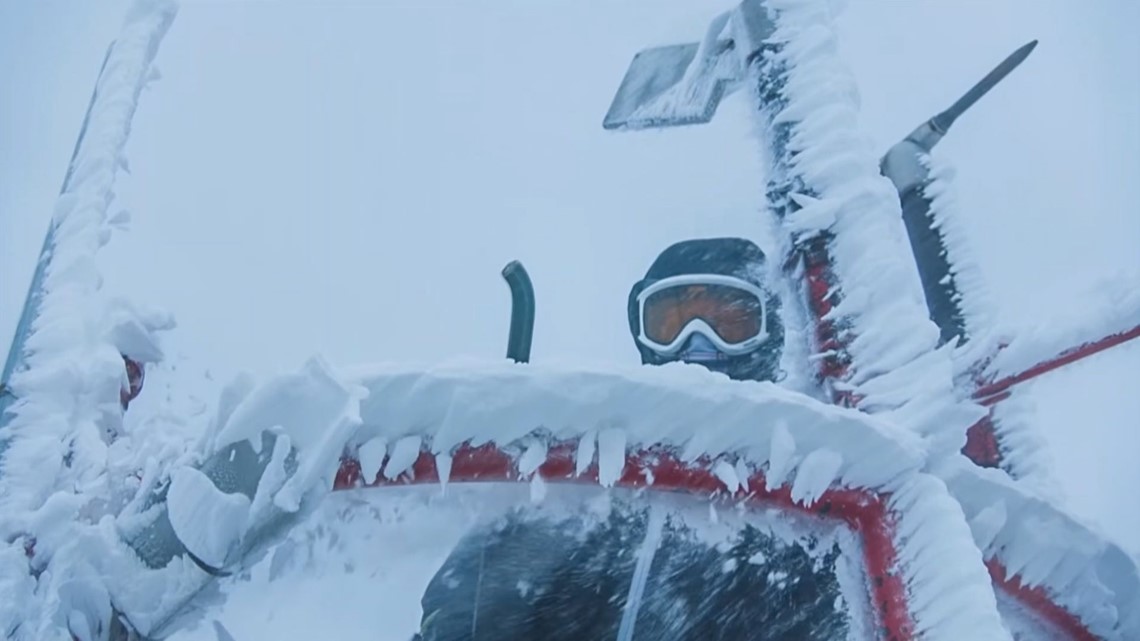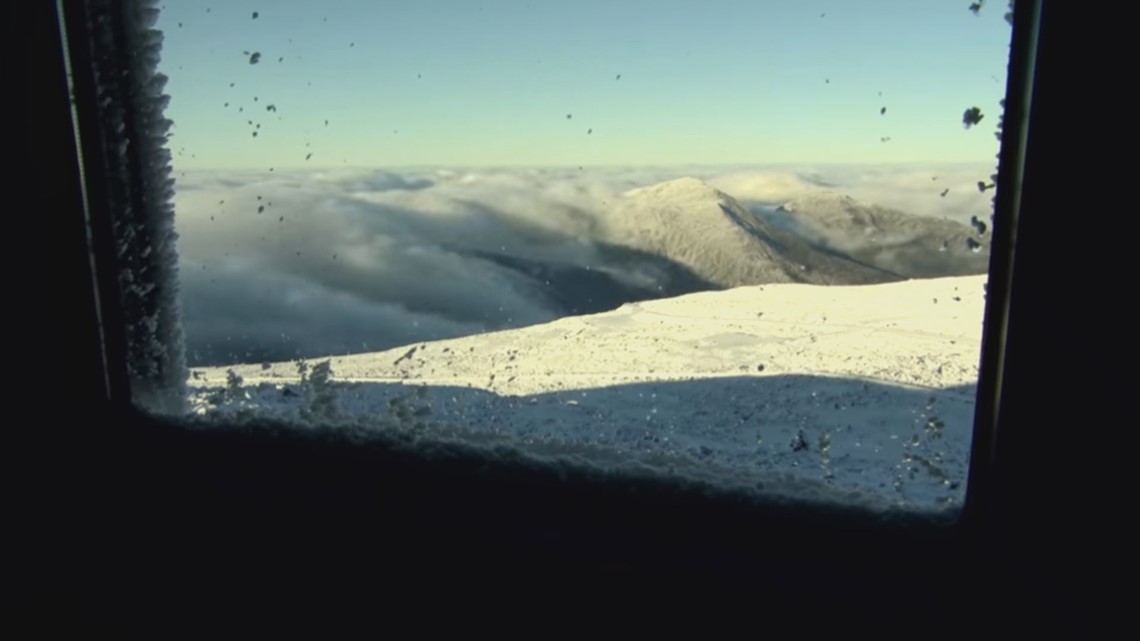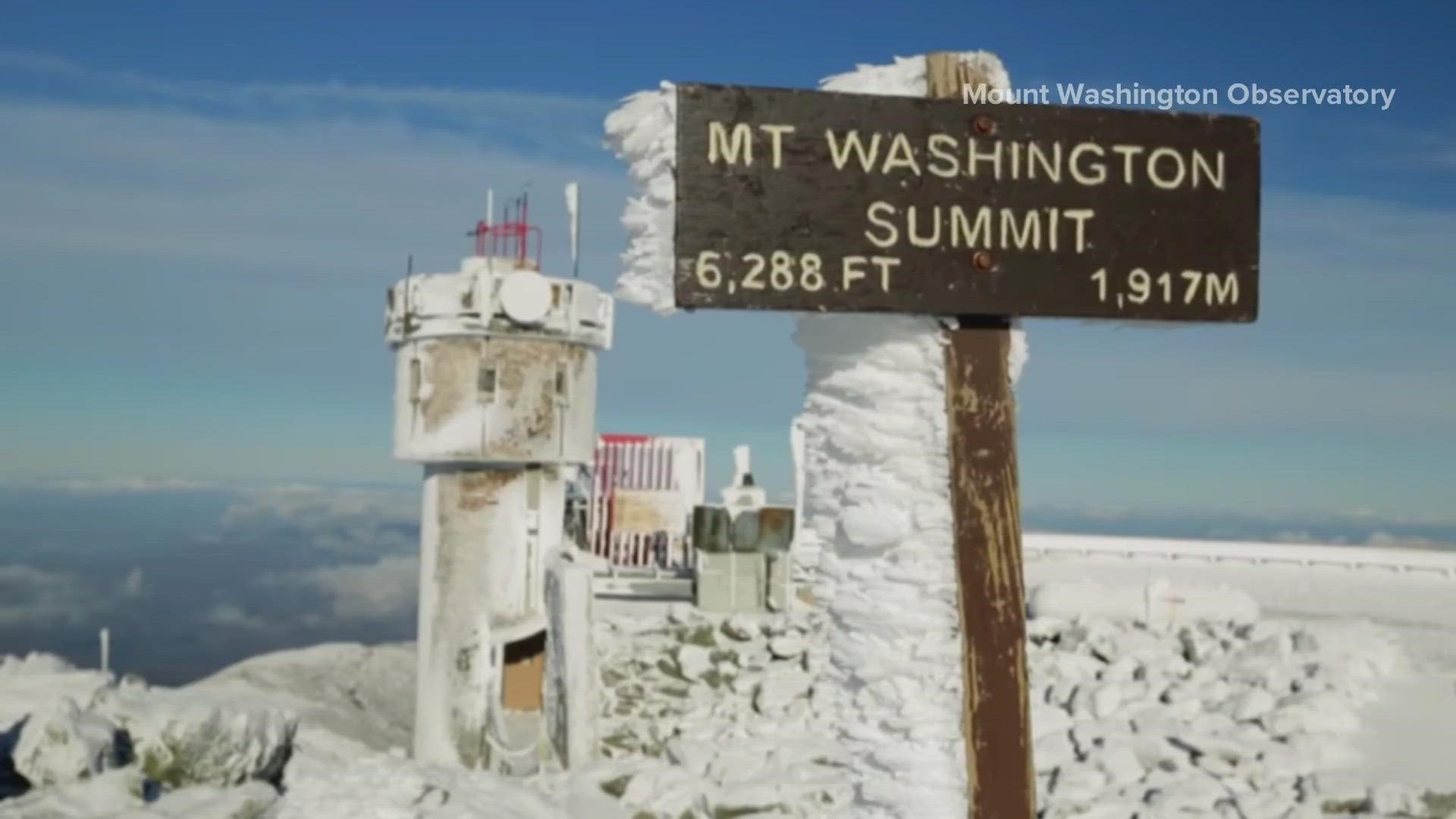PORTLAND, Maine — Updates:
A new daily record low temperature of 32 degrees below zero Fahrenheit was broken Friday, according to a tweet from the Mount Washington Observatory. According to the post, the original record was set in 1963. Temperatures are expected to continue to plummet throughout the evening, and record low temperatures with wind chill factored in are still likely to be broken.
As of 11:32 p.m., the summit temp measured 46.1 degrees below zero, with wind speeds of 97 mph, and a wind chill clocking in at 108 below zero, according to the observatory's current summit conditions.
The overall record low temperature recorded at the summit was 47.5 degrees below zero, set in 1932.
Here's a view from the summit as of noon Friday:
Original Report:
Many Mainers will likely stay indoors as much as possible as an artic blast of low temperatures rolls into the state Friday.
But for meteorologists on top of the summit of Mount Washington, like Francis Tarasiewizc, these events are what they prepare for.
“This [job] has been a lifelong dream of mine," he said during a Zoom interview Thursday. "I’ve got a long history of just being fascinated by extreme weather and super excited to be up here, even with what we’re looking at in the coming days."
The staff on the summit work dayslong shifts inside a building with 6-foot-thick concrete and steel reinforced walls.
Tarasiewizc said those walls are their first "layer of protection" during severely cold weather events such as what has been forecast for this weekend.
Based on the observatory's models Thursday afternoon, summit temperatures could reach 50 degrees below zero overnight Friday and early Saturday, which would break the all-time record low temperature of 47.5 degrees below zero, recorded in 1932.


That number is just air temperature, and it doesn't factor in windchill.
Tarasiewizc said the summit will likely see wind gusts of 80 to 90 mph during the day Friday.
“Increasing to well above 100 mph overnight, with some models indicating maybe 130, 140 mph gusts," he said.
Those arctic temps won't slow him or the team on the summit down from doing their work outside. They have special thermometers designed to track extremely low temperatures and wear the appropriate gear to stay safe outside.
Tarasiewizc shared ways he stays warm and safe on the summit, and we can do the same closer to sea level.
“Really the story is layers and lots of layers," he added. "Your bottommost layer is going to be your most important layer, and it’s going to keep your heat in. It’s much easier to retain the heat than rebuild it,"


If you do venture outside Friday or Saturday, be aware that frostbite at these predicted temperatures can appear in under a minute on exposed skin.
“You want to look out for things like waxy skin, feelings of pins and needles, extreme pain on your skin, symptoms like that are the early signs of frostbite," Tarasiewizc said.
If you're curious, Tarasiewizc said the warmest temperature ever recorded at the summit was 72 degrees.

